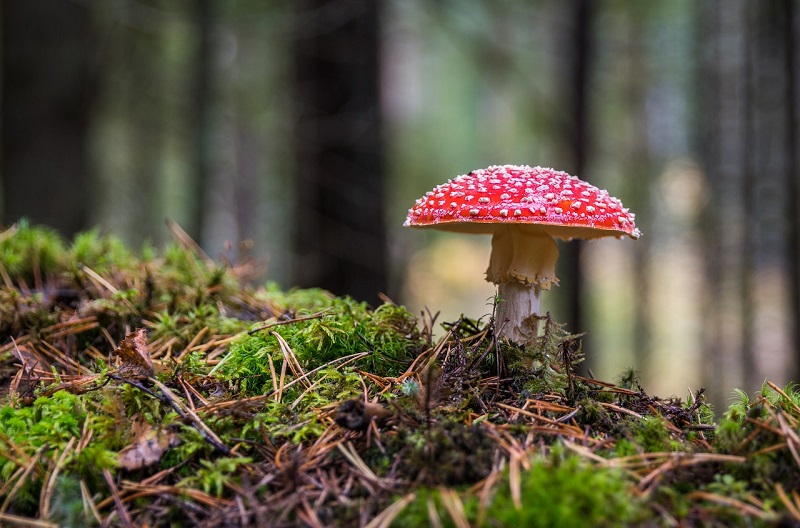
With superfoods taking over our kitchens and nutrition discussions, have you ever found yourself scratching your head at yet another unfamiliar item? Enter Irish Moss. A seaweed rich in nutrients, it’s been quietly sneaking its way onto health-conscious menus— and for good reason. Today, we embark on an exploration of the culinary uses of this versatile sea vegetable.
Hidden away in the chilly Atlantic waters, Irish moss (Chondrus crispus) or carrageen moss, while often overlooked, holds a treasure trove of health benefits. Amidst our increasingly expansive wellness dictionary, Irish moss offers a humble but significant contribution. Yet, what exactly do we do with it in the kitchen?
This in-depth voyage of Irish Moss in culinary practices not only aims to answer the burning question of what to do with this intriguing ingredient, but will ignite your curiosity to add this nutritional powerhouse into your diet. Let’s dive in.
The Historical Context of Irish Moss
The journey of Irish Moss from unassuming seaside inhabitant to our kitchen shelves is an interesting one. Rooted deep in traditional Irish practices, people turned to Irish Moss during the Great Famine (1845-1852) for sustenance. With a protein count rivalling that of nuts and a treasure trove of vitamins and minerals, it certainly packed a punch.
In addition to its absorption of beneficial nutrients from seawater, its thickening property was discovered, propelling its popularity further. Today, Irish Moss graces the ‘ingredients lists’ of various foods like ice cream, beverages, baked goods, and even whiskey!
Emerging as a culinary hero in both survival and culinary artistry context continues to build its legacy within our contemporary pantry staples.
Nutrition Profile – Why Irish Moss?
The multifaceted claim to fame as a dietary inclusion emerges from its astounding nutritional profile. Rich in iron, magnesium, calcium, zinc, iodine, and a whole arsenal of other vital nutrients, it presents itself as a strategic choice for health-conscious individuals and dieticians.
Moreover, it is a great source of soluble fibre, making it a godsend for digestive health. Being vegan-compatible and gluten-free adds more stars to its reputation, accommodating all sorts of dietary preferences and requirements.
Yes, the health benefits of Irish Moss are extensive. However, it’s equally crucial to understand how to incorporate it into your meals to fully reap these benefits.
The Art of Cooking with Irish Moss
Often sold dehydrated, Irish moss needs some preparation before adding to dishes. Rehydration followed by blending until glycous results in Irish Moss Gel, a useful binding agent in vegan recipes and smoothies.
In soup recipes, adding Irish moss to the pot enhances the broth’s richness and gives it an appealing glossy finish. Thinking dessert? A traditional Irish pudding, blancmange, uses Irish moss as a thickening agent.
The uniquely neutral flavor profile of this seaweed makes it a versatile addition in various recipes, paving the way to experiment creatively in your culinary adventures.
Possible Risks and Downsides
While the benefits are enticing, it’s imperative to mention that with every rose comes its thorns. Raw Irish Moss contains a substantial amount of iodine, and overconsumption can lead to thyroid dysfunction.
As this potent seaweed can also act as a blood thinner and lower blood pressure levels, people with related health conditions should proceed with caution. Always consult your healthcare provider before introducing Irish Moss into your dietary regiment, especially if you’re pregnant, nursing, have lower blood pressure or are on anticoagulant medication.
The Ethical Dimension of Harvesting
The demand for Irish Moss has surged, prompting conversations around its sustainability. Overharvesting threatens its existence, potentially disrupting the marine ecosystem. Supporting companies that disclose sustainable harvesting practices is a step towards embracing this superfood ethically. Make sure to research your suppliers to safeguard not only your health but the health of our oceans too.
Conclusion
As our culinary lexicon expands, Irish Moss marks its spot as an intriguing ingredient carrying a rich historical legacy and an impressive nutrition profile. Bearing the capacity to grace anything from soups to desserts, its versatility exemplifies the magic that food can bestow.
The mindfulness towards potential health risks and commitment towards ethical harvesting practices should remain as guiding principles as we integrate this marine superfood into our diets. Tomorrow’s kitchen seems incomplete without the Irish Moss – a humble algae that has seen both hardship and glory, and has still stood the test of the culinary evolution.





